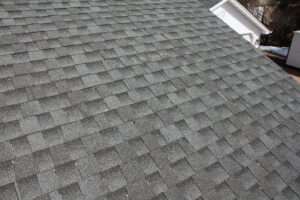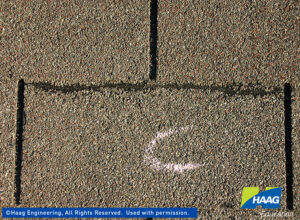Does Haag’s Test Square Method Work for Wind-Related Damage?
BY SCOTT BALOT, RRO, SENIOR CONSULTANT, HAAG CONSTRUCTION CONSULTING, AND JONATHAN GOODE, Ph.D., P.E., PRINCIPAL ENGINEER, ASSOCIATE VP OF ENGINEERING

The test square works well for hail due to the randomness of hailfall. Excluding areas that are covered or blocked by obstructions, any one area on the roof has a similar chance of being struck by hail that any other area has on the same roof. Certainly, there are other variables to hailfall including wind-driven directionality in which hail typically falls and the test square methodology captures this given that test squares are performed on each directional facing slope.
So, what about quantifying wind-related damages in the same manner? In order to answer that, it is important to understand the two basic types of wind damage that can occur to a roof system.
The first type is called “direct” wind damage. Direct wind damage consists of material blow-off and material uplift resulting in tears, creases, fastener detachment, or material displacement. An example would be a creased three-tab shingle. The second type is called “indirect” wind damage. Indirect wind damage is experienced when wind-blown debris causes damage upon impact. An example of this is a satellite dish that is blown over and punctures the roof covering.
Can direct wind damage be quantified using the test square method?
Unlike hail, wind effects on buildings not only vary from the windward slope to the leeward slope, but also differ from the edge of the slopes where materials are most vulnerable to uplift (corners, eaves, rakes), at the top (ridges), and finally to the middle (field). Installation of roof materials, such as variable fastener placement, condition of materials, such as seal strip bond on asphalt shingles, and slope pitch can also play a role in the effect that wind has on a roof covering throughout each slope.
Because direct wind damages are not consistent throughout each slope, attempting to quantify damages with test squares and extrapolating those results for the entire surface will not accurately represent the number of potentially damaged components.
Can indirect wind damage be quantified using the test square method?
Because indirect wind damage is specific and contained to each item that impacts the roof surface, the only accurate way to quantify indirect damages is on an individual basis and limited to the damages directly caused by wind-blown item.
Conclusion
While the test square method is acceptable for calculating hail-related damages, it is not suitable for determining extent of wind-related damages. Careful inspection of the entire roof surface should be performed in order to properly assess both types of wind-related damages to obtain accurate amount of area(s) affected.
_________________________
Jonathan S. Goode, Ph.D., P.E., serves as Associate Vice President for Haag Engineering Co. and is a Senior Engineer. Dr. Goode provides engineering consulting and expert witness services. He has provided expert testimony in cases involving roof and building envelope performance/damage. Dr. Goode has presented at various conferences and claims association meeting, as well as chapters of the American Society of Civil Engineers. Dr. Goode holds B.S., M.S., and Ph.D. degrees in Agricultural and Civil Engineering from the University of Georgia, the University of Colorado at Boulder, and Colorado State University. He is a licensed professional engineer in 17 states and was an Assistant Professor at Oklahoma State University prior to coming to Haag Engineering in 2010. Dr. Goode has published papers in several peer-reviewed scientific journals. Dr. Goode is a member of the American Society of Civil Engineers and serves on the Committee on Forensic Practices in the Forensic Engineering Division.
Scott Balot is a Senior Construction Consultant with Haag Construction Consulting with 20+ years’ experience in the construction and insurance industries. Mr. Balot expertise includes knowledge of wind and hail-related evaluations to a wide variety of commercial and residential roof systems and exteriors. These roof systems include installations on multi-family complexes, industrial facilities, restaurants, hotels, shopping centers, commercial facilities, government operations, residences, and many others. Scott has experience in damage assessment, consulting, estimating, negotiation, and project management. Scott previously worked as a Roof Consultant and a Property Claims adjuster for several independent firms in multiple states. Mr. Balot gained extensive knowledge related to claims practices and adjustment processes, and has worked in major catastrophe (hurricane) environments. He has been involved in both residential and commercial losses ranging from storm-related events to fire, theft, water, and vandalism damages. He has also successfully represented clients in appraisal processes.
Any opinions expressed herein are those of the author(s) and do not necessarily reflect those of Haag Engineering Co., Haag Construction Consulting, Haag Education, or parent company, Haag Global, Inc.


